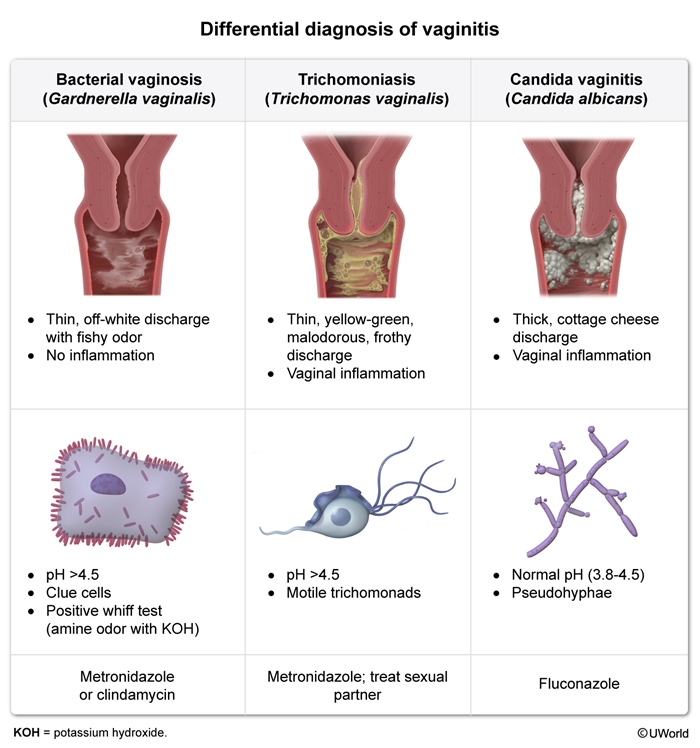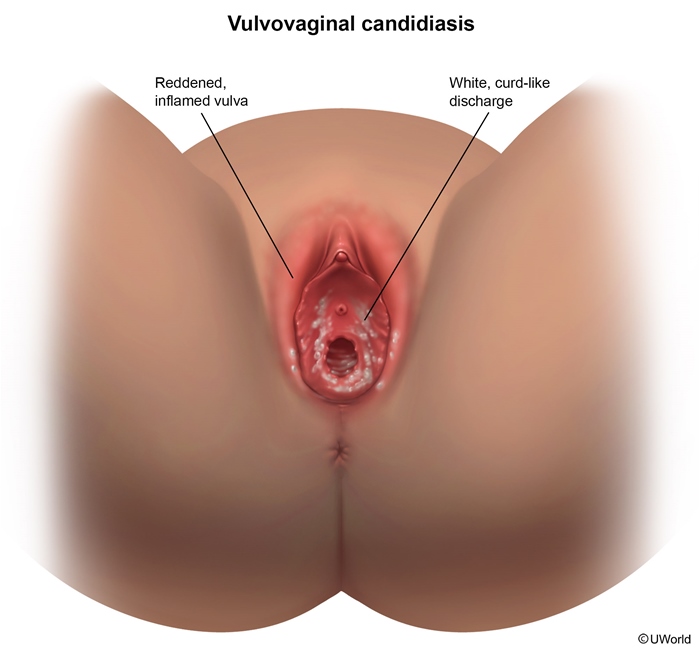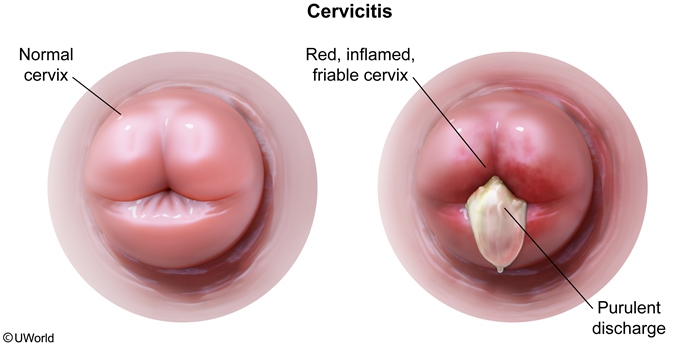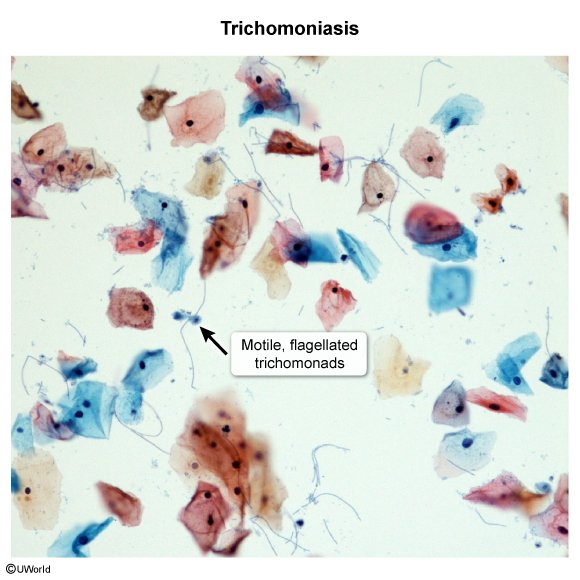Evaluation Of Vaginal Discharge
Article Sections
Introduction
Vaginal discharge is a common gynecologic issue that can be physiologic (normal) or indicative of an underlying infection or other pathology. A thorough history, physical examination, and diagnostic testing determine the cause and guide management.
Pathogenesis
Vaginal discharge can be either physiologic or indicative of a pathologic process.
Physiologic leukorrhea is normal vaginal discharge that occurs due to fluctuations in estrogen and progesterone levels (ie, from menarche to menopause). Leukorrhea is odorless and composed of endocervical secretions, vaginal epithelial cells, and vaginal transudate that may be white, clear, or slightly yellow. The consistency (watery vs mucoid) and quantity of discharge vary over the course of the menstrual cycle (ovulation) and with pregnancy.
Nonphysiologic discharge occurs due to pathologic processes that can involve infections (most common), inflammatory conditions (increased transudate or vaginal secretions), or malignancy (blood-tinged discharge with cervical or endometrial cancer).
Continue Learning with UWorld
Get the full Evaluation Of Vaginal Discharge article plus rich visuals, real-world cases, and in-depth insights from medical experts, all available through the UWorld Medical Library.
Figures




Images

